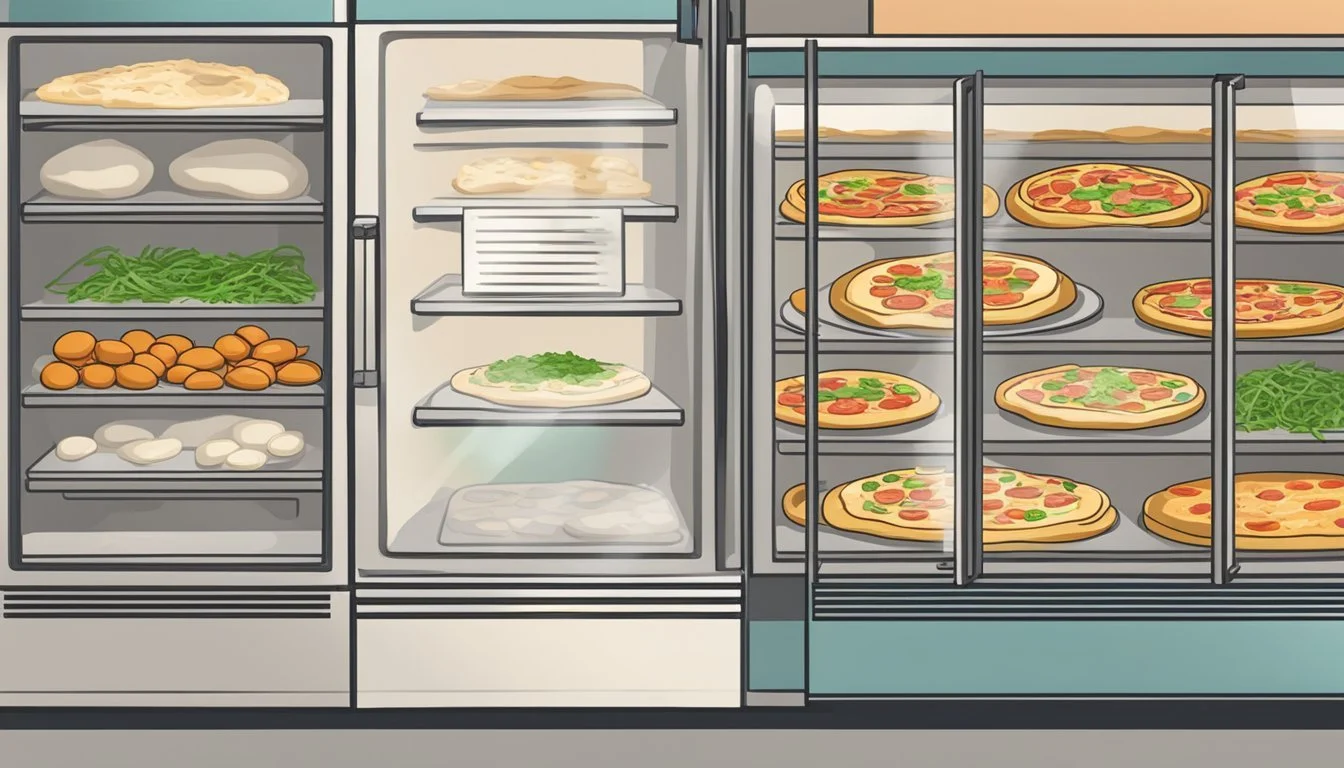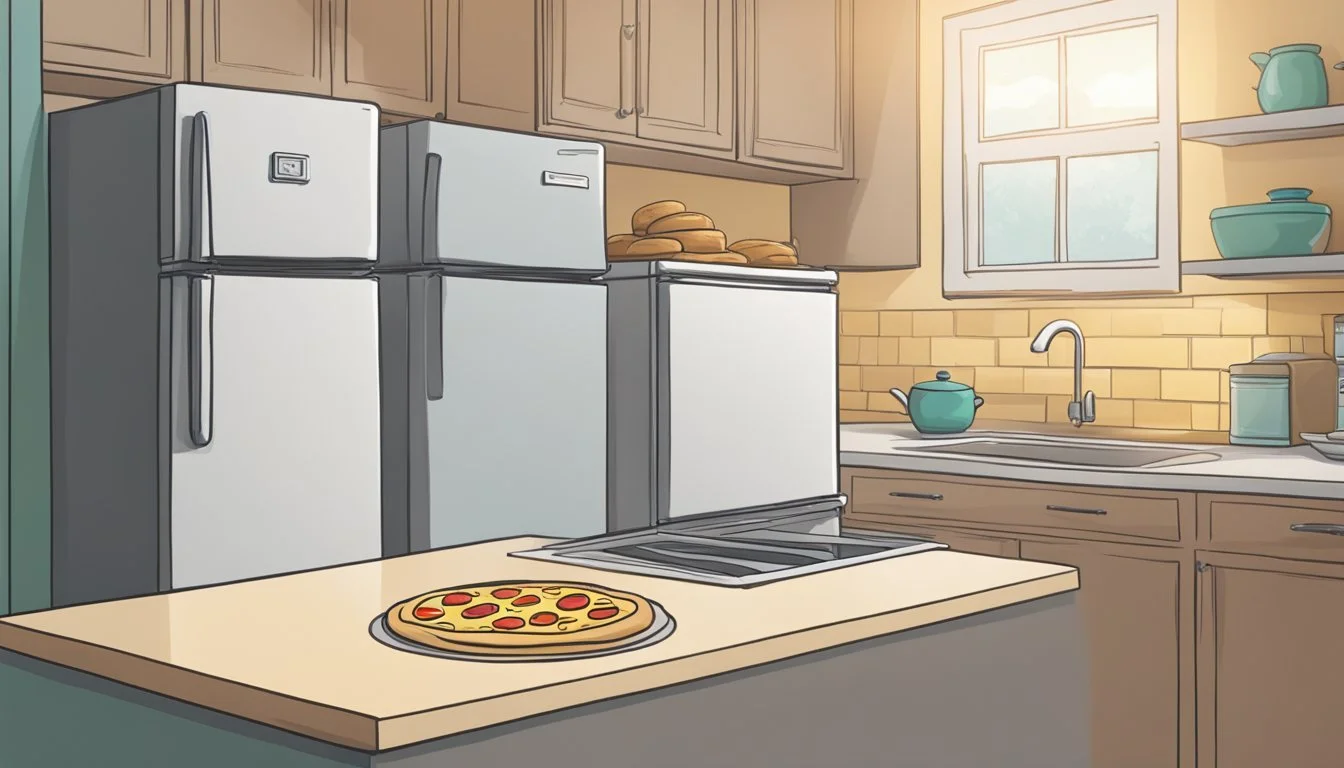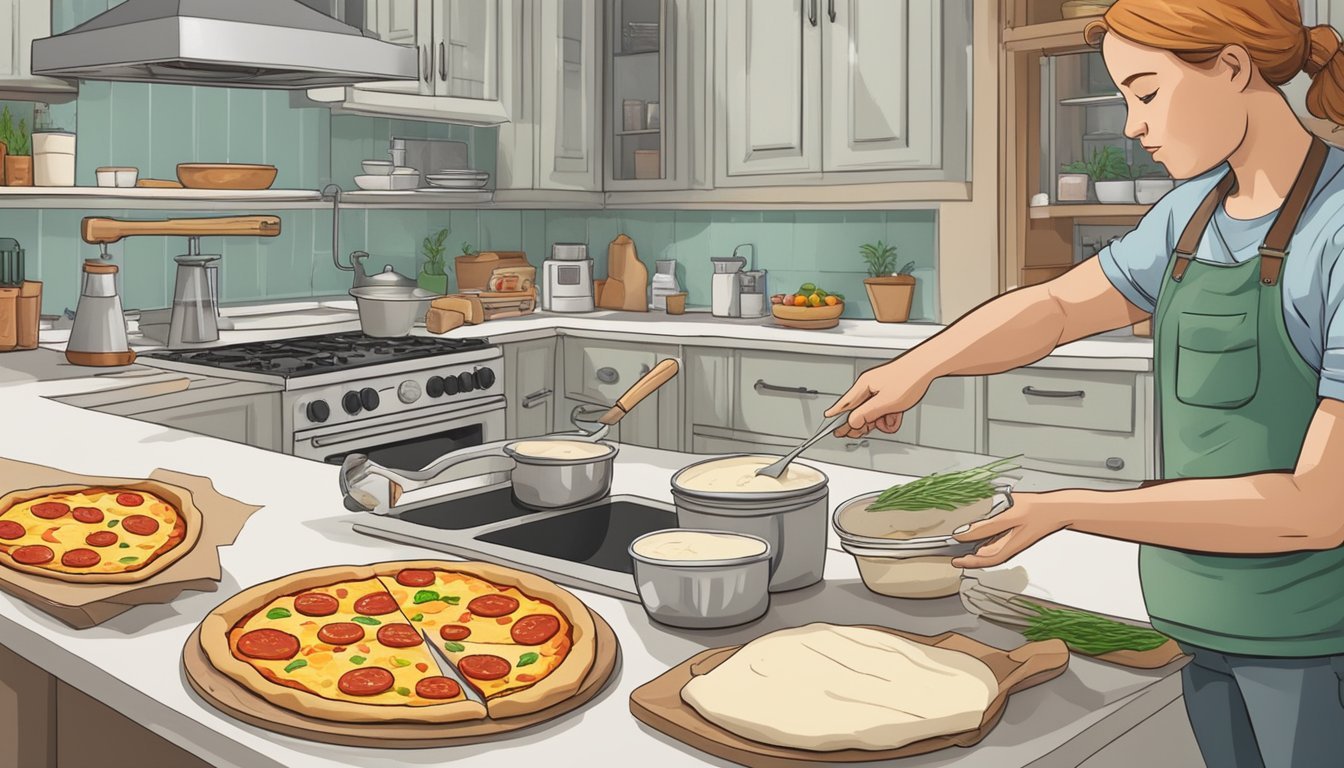Do I Have to Refrigerate Pizza Dough?
Understanding Proper Storage Practices
Storing pizza dough properly is crucial for maintaining its quality and ensuring the best possible outcome for homemade pizza. It requires refrigeration if it's not being used immediately. The cool temperatures slow down the fermentation process caused by the yeast, preserving the dough's freshness and extending its usability. Many home cooks and professional chefs alike recommend refrigerating pizza dough when it's made in advance, as it can typically be kept for a couple of days up to two weeks, depending on the dough's ingredients and the refrigerator's temperature.
Refrigerating pizza dough not only prolongs its life but can also enhance the flavor. The cold fermentation process allows for a more complex development of flavors, contributing to a better-tasting crust. When it's time to bake, bringing the dough to room temperature is necessary to ensure it's pliable and easier to shape. This typically takes about 30 minutes to an hour, depending on the size of the dough ball and the room's temperature.
Understanding Pizza Dough
Pizza dough is the foundation of any pizza recipe and comprises a few essential ingredients: flour, yeast, water, olive oil, and salt. Occasionally, sugar is added to the mix to either hasten the yeast's activity or enhance the dough's browning during baking.
The Role of Each Ingredient:
Flour: Serves as the base; the type of flour affects the gluten content and thus the texture.
Yeast: A living organism that ferments the dough, contributing to its rise and flavor.
Water: Hydrates the flour and activates the yeast.
Olive Oil: Adds moisture and flavor, and helps create a tender crust.
Salt: Provides flavor and regulates yeast activity.
Sugar: Optional, can help with yeast fermentation and crust coloring.
When mixed together, the flour and water activate the gluten proteins, which are essential for elasticity and chewiness. The yeast, a crucial component, is responsible for the fermentation process, causing the dough to rise and develop its characteristic flavor.
Making Homemade Pizza Dough:
A typical homemade pizza dough recipe involves combining these ingredients and kneading them to form a smooth and elastic dough ball. Kneading is important as it develops the gluten further, impacting the final texture.
Homemade pizza dough's quality is heavily influenced by the kneading process, the ratios of ingredients, and how it is handled throughout the fermentation or proofing stage. Whether it’s a quick dough for immediate use or a slow-fermented one, proper handling is key to achieving the desired outcome.
Reasons to Refrigerate Pizza Dough
Refrigeration is a critical step for pizza dough to regulate fermentation and develop desirable characteristics in texture and flavor. It also provides a strategic approach to the timing and convenience of pizza preparation.
Fermentation Control
By placing pizza dough in the fridge, one manages the rate of fermentation. The colder temperature slows down the yeast activity, offering a longer window for the dough to rise. This controlled process not only prevents the dough from overproofing but also affects the final bake quality.
Texture and Flavor Development
Homemade pizza dough benefits significantly from refrigeration when it comes to flavor and texture. A slow ferment in the cool environment of a fridge allows the dough to develop a more complex and nuanced flavor profile. Additionally, this gradual process contributes to a more consistent and desirable texture in the crust.
Convenience and Timing
Storing dough in the fridge adds an element of convenience. One can prepare the dough ahead of time and store it for later use, streamlining the pizza-making process to suit their timing. Ready-to-use refrigerated dough simplifies the workflow, especially when aiming to serve fresh pizza without the immediate need to mix a new batch of dough.
Storing Pizza Dough in the Refrigerator
When preserving pizza dough in the refrigerator, one prioritizes food safety while maintaining the dough's quality. Appropriate storage extends the life and usability of refrigerated pizza dough.
Airtight Container Usage
For optimal results, one should store pizza dough in an airtight container to maintain freshness and prevent the dough from absorbing any odors from the refrigerator. Additionally, a light coating of olive oil can be applied to the dough before placing it in the container to prevent sticking. Using plastic wrap can serve as an alternative, ensuring the wrap is tightly sealed against the dough's surface to minimize air exposure.
Refrigeration Duration
Refrigerated pizza dough can generally maintain its quality for 1 to 3 days. Beyond this time frame, the dough may begin to degrade, potentially becoming sticky or developing off-flavors. However, precise storage methods can extend its freshness and usability within this recommended window.
Dealing With Air Exposure
Minimizing air exposure is crucial for preserving the integrity of pizza dough in the refrigerator. When storing dough, one must ensure that the container is properly sealed. If using plastic wrap, it should snugly fit over the dough, leaving minimal air pockets. This practice reduces the risk of oxidation and prevents the formation of a dry crust on the surface of the dough.
Alternative Storage Methods
When storing pizza dough, one doesn't have to limit themselves to refrigeration. Both freezing and room temperature storage offer viable options, depending upon the intended duration before use.
Freezing Pizza Dough
Freezing pizza dough effectively extends its shelf life. For optimal results, one should portion the dough into individual balls, lightly coat them with oil, and wrap each ball in aluminum foil or place them in freezer-safe bags. By doing so, the dough can be preserved for up to 3 months. It's crucial to thaw the dough in the refrigerator for several hours or overnight before bringing it to room temperature to use.
Coat dough balls lightly with oil.
Wrap in aluminum foil or place in a freezer-safe bag.
Label with date and freeze for up to 3 months.
Room Temperature Options
Storing pizza dough at room temperature is suitable when planning to bake the same day. The dough should be covered with a damp cloth and allowed to rise until nearly doubled in size, which typically takes 1-2 hours. It's essential not to leave the dough out for more than a couple of hours to prevent over-proofing and possible spoilage.
Cover with a damp cloth.
Allow to rise for 1-2 hours at room temperature.
Use within a few hours to ensure freshness.
Preparing Dough for Use After Storage
Once pizza dough has been stored, whether in the freezer or refrigerator, it needs to be properly prepared for use to ensure the best quality of the final product. This preparation includes thawing, temperature adjustment, and proofing.
Thawing Frozen Pizza Dough
To thaw frozen pizza dough, one should transfer it to the refrigerator and leave it overnight. Ideally, the dough should be moved from the freezer to the fridge at least 12 hours before use. This slow thawing process helps maintain the dough's structure and prevents any shock that might occur with rapid temperature changes.
Bringing Refrigerated Dough to Room Temperature
Dough that has been refrigerated should be allowed to come to room temperature before use. This step can take several hours, depending on the ambient temperature of the kitchen. One should simply place the dough on the counter, covered with a kitchen towel to prevent drying out. This gradual increase in temperature aids the yeast's activation which is critical for a proper rise.
Final Proofing After Refrigeration
After the dough reaches room temperature, it requires a final proofing stage before baking. During this phase, the dough should be shaped and then left to rise under optimal temperature control conditions, which typically means in a warm, draft-free area. The final rise, depending on the dough's temperature and the yeast's activity, may take anywhere from 30 minutes to several hours. One can tell that the dough is ready when it has doubled in size and leaves a slight indentation when poked gently.
Tips for Homemade Pizza Dough
When making pizza dough at home, one can achieve better flavors and textures by paying attention to kneading methods, selecting appropriate ingredients, implementing proper sealing techniques, and understanding storage requirements.
Kneading for Optimal Texture
Kneading pizza dough is a critical step that develops gluten, providing the dough's elasticity and chewy texture. One should knead the dough for about 8-10 minutes or until it is smooth and passes the "windowpane test," which involves stretching a small piece of dough to see if it forms a thin membrane that light can pass through.
Choosing the Right Ingredients
For authentic homemade pizza dough, 00 flour is often the flour of choice due to its fine grind and high protein content, which makes for a smooth, stretchy dough. Incorporating high-quality olive oil can enhance flavor and texture, while the correct yeast and water ratio is fundamental in achieving the proper rise and airy crust.
Sealing and Protection Methods
Once one has prepared the dough, it's important to seal it properly to prevent drying out. Lightly coating the dough ball with olive oil and storing it in an airtight container guarantees moisture retention. If the dough is to be used within a few hours, room temperature storage is suitable; for longer periods, refrigeration is necessary.
FAQs About Pizza Dough Storage
Do I have to refrigerate homemade pizza dough? Yes, if not used within a few hours.
How long can pizza dough last in the refrigerator? Typically, up to 72 hours.
Can dough be frozen for later use? Absolutely, pizza dough can be frozen for up to 3 months, well-sealed to protect against freezer burn.
Advanced Pizza Dough Techniques
In pursuit of perfect pizza, chefs have honed several advanced techniques aimed at enhancing the dough’s flavor and texture. These methods often involve controlled fermentation processes and a considered approach to handling the dough.
Slow Fermentation for Flavor
For dough that boasts a complex flavor, slow fermentation is key. Connoisseurs often extend the fermentation process, letting the dough rest in a refrigerated environment for 24 to 72 hours. This technique not only enriches the taste but also contributes to the dough's elasticity, making it easier to shape.
Mix ingredients and knead the dough as usual.
Allow it to rest in a covered container.
Place in the refrigerator for an extended period.
Remove and let the dough come to room temperature before shaping and baking.
Achieving Neapolitan Pizza Qualities
Neapolitan pizza is prized for its delicate, charred crust and authentic taste. Precision in temperature and fermentation time is crucial when replicating Neapolitan pizza qualities at home.
Develop a high-hydration dough for optimal elasticity.
Ferment at lower temperatures to prevent the dough from becoming too airy or losing texture.
Use a wood-fired oven, preheated to around 800°F (427°C), to emulate the unique cooking environment of traditional Neapolitan pizzerias.
Bulk Fermentation Method
Bulk fermentation refers to letting a large quantity of pizza dough ferment together before it's divided into individual portions. This approach is effective when handling leftover pizza dough or preparing in advance for a pizza-making adventure.
After kneading, place the entire batch in a large, covered container.
Allow it to rise at room temperature until doubled in size.
Afterwards, divide the dough into portions and proceed with refrigeration or immediate use.
By incorporating these methods, enthusiasts and professionals alike can elevate the humble pizza dough into a culinary work of art.
Selecting Storage Containers
When storing pizza dough, the choice of container is critical to maintain its freshness and quality. The right container will prevent the dough from absorbing unwanted odors and keep it at its best, whether in the refrigerator or freezer.
Doughmate Artisan Dough Tray Kit
For professionals and home chefs, the Doughmate Artisan Dough Tray Kit is an excellent option for refrigeration storage. It is designed specifically for dough, offering a stackable solution that is both space-efficient and convenient. The trays are made from durable materials that can withstand the cold temperatures of the refrigerator without cracking or warping. The design ensures that each pizza dough is separated, which prevents sticking and allows for even cooling.
Using Freezer-Safe Storage Options
When opting to store pizza dough in the freezer, choosing freezer-safe storage containers is paramount. It's advisable to use airtight containers to protect the dough against freezer burn and odor absorption. Containers should also be made of a material that won't crack at low temperatures and can be sealed tightly to prevent air from entering. Dividing the dough into portion-sized balls before freezing ensures that only the necessary amount can be thawed, reducing waste and maintaining quality.
Troubleshooting Common Storage Issues
When storing pizza dough, maintaining its quality involves managing factors such as temperature, exposure, and time. These can influence the dough’s rise, taste, and texture. The following are critical considerations for ensuring the dough remains suitable for delicious pizza.
Avoiding Over-Proofed Dough
Over-proofed dough can lead to flat and dense pizzas. To prevent this:
Refrigeration: Store the dough in a refrigerator to slow down the yeast's activity and control the rise.
Volume watch: Check the dough periodically. It should double in size but not go beyond that.
Preventing Freezer Burn
Preventing freezer burn is essential to maintain dough freshness and quality:
Airtight packaging: Wrap the dough tightly in plastic wrap before placing it in a freezer bag.
Temperature consistency: Keep the freezer at a constant temperature to prevent temperature fluctuations that may cause freezer burn.
Handling Off Smells and Tastes
A dough's smell and flavor are indicators of its freshness and edibility:
Food safety: A sour or yeasty smell can indicate over-fermentation. If the odor is off, it's best to discard the dough.
Storage time: Use refrigerated dough within 24 to 48 hours and frozen dough within 2-3 months to ensure peak flavor.
Enhancing Your Pizza Making Experience
In crafting a memorable pizza, attention must be paid to the sauce used and the crust's texture. Each component contributes significantly to a great pizza, and their quality should not be compromised.
Pairing with the Right Pizza Sauce
The foundation of any great pizza is its crust, but the impact of the pizza sauce cannot be overlooked. It should complement the flavors inherent in the dough. For a traditional pizza, a sauce rich in tomatoes with hints of garlic, basil, and oregano is ideal and can accentuate the subtle notes developed during the dough’s fermentation process. When selecting a pizza sauce, it’s important to consider:
Flavor Profile: High-quality tomatoes provide a good acidity that balances the richness of the cheese.
Consistency: A sauce that is neither too thick nor too runny ensures an even layering and contributes to the final texture of the pizza.
Managing Air Bubbles in the Crust
Achieving the perfect pizza crust includes managing the air bubbles that form during fermentation and rise. These bubbles contribute to the crust's lightness and texture. However, large, unchecked air bubbles can result in an uneven crust. To manage them:
Punching Down the Dough: After the first rise, gently punch down the dough to release any large air bubbles.
Forming the Dough: Shape the dough carefully into balls before a second rise or refrigeration, as this can help maintain an even distribution of air bubbles.
For those preferring a thinner crust with fewer bubbles, refrigerating the dough after it rises can relax the gluten, which helps regulate bubble size during baking.








